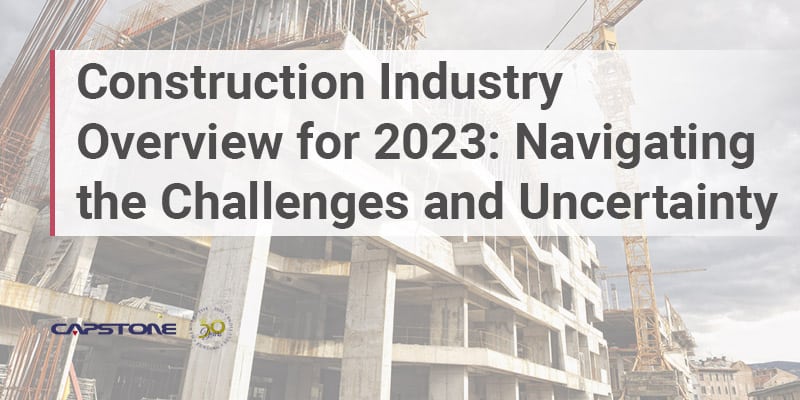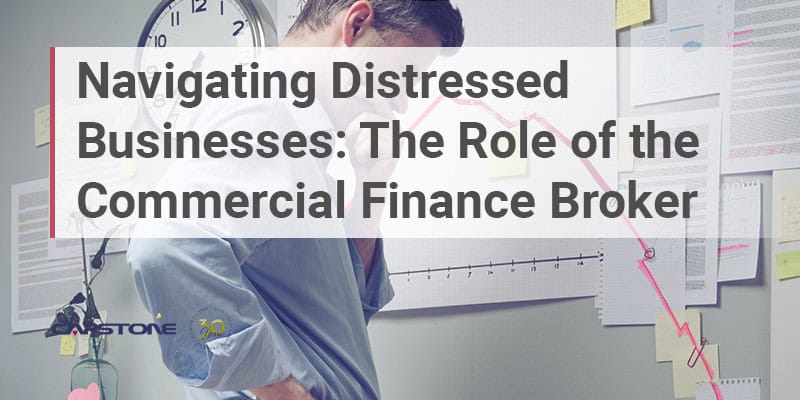The U.S. engineering and construction (E&C) industry had strong results in 2021, with construction spending growing by 8%. Robust construction spending carried over into 2022 and was bolstered by passage of the Infrastructure Investment and Jobs Act and the CHIPS and Science Act (CSA) of 2022. The CSA provides $52.7 billion in funding for American semiconductor research, development, and manufacturing and is expected to propel construction in 2023 and a number of years in the future.
With this strong tailwind, the overall outlook for 2023 is favorable, but the underlying picture varies across different industry segments. Commercial construction, particularly projects funded by government spending, is projected to be strong; however, the picture for the residential segment is not as bright due to weaker consumer demand.
While some segments may outperform others, continuing challenges from inflation, supply chain issues, shortage of skilled labor, increased interest rates, and the uncertainty of bank failures will undoubtedly impact projects financed by the private sector.
Under these circumstances, those in the E&C industry could experience project completion delays, increased construction costs, reduced profit margins, extended invoice payment terms, and difficulty in obtaining capital to fund projects.
Against the backdrop of the outlook for 2023, there are five key trends in the industry to watch.
Market Developments
The market uncertainty facing the E&C industry, from inflation, high-interest rates, rising costs, supply-chain problems, material and skilled labor shortages, and possible capital constraints, could result in a different outcome for 2023. Companies are carefully monitoring their backlogs, particularly for the second half of the year. Many companies have large backlogs, including energy-related projects and data centers, but in the second half of 2023, they may see the potential impact of an economic slowdown on project completion along with the delay of plans for new projects.
Supply-Chain Issues
Supply-chain problems that have increased lead times and led to volatile material costs are likely to continue. These disruptions are expected to drive the E&C industry to adopt changes to business models that will incorporate new developments, including:
- Technology: New technology to maximize inventory strategies for managing supply disruptions and increasing material costs. Advanced construction technology in 3D, virtual modeling, and robotics to develop solutions for labor shortages and control carbon emissions.
- Ecosystem environment: Utilization of an ecosystem approach in order to improve the ability to respond to disruptions and enable compatibility throughout the supply chain. An ecosystem with 4.0 providers (Intel Corporation, GE, Siemens, IBM, etc.) and material suppliers uses data-sharing platforms to exchange real-time information with material suppliers to manage disruptions or supply shortages. There will be a need for digitalization, automation, data management, and IT solutions.
- Supply chain management: Increased focus on reducing the length of the supply chain. Building more local capacity, getting closer to customers, and reducing dependence on foreign suppliers to reduce the risk and severity of supply-chain disruptions. Geopolitical uncertainty, the pandemic, labor shortages, and rapidly changing dynamics in energy markets have increased the cost and uncertainty of sourcing in Asia. Supply-chain disruptions can result in lost revenues and cash flow.
New Labor Strategies
Labor strategies will remain a priority in the E&C industry. Labor shortages due to an aging population, competition for workers from other industries, and declining interest in the type of work the industry offers are expected to continue. Retaining skilled labor and attracting new talent will be important goals.
Businesses will need to become purpose-driven organizations and offer a personalized career path. Adopting new construction technology could help to attract employees with new skills and retain workers with the opportunity to work with advanced technology and innovations.
Integration of New Technologies
E&C companies are leveraging emerging technology to increase business opportunities, reduce costs, improve project execution, and increase profits. Companies are investing in digital and physical technologies such as visual intelligence, sensors and Internet of Things (IoT) devices, robotics, immersive collaboration, and drones to also increase efficiency. New technology tools are essential to successfully address the challenges presented by supply-chain disruptions, skilled worker shortages, and volatile material prices.
ESG and Sustainability
Trends indicate that customers may be becoming more conscious of sustainability and exerting pressure on developers to reduce the carbon footprint of new projects. The increasing focus on environmental responsibility could motivate E&C companies to factor sustainability into their projects, construction processes, and designs. According to a survey by Associated General Contractors of America in June 2022, 78% of respondents reported having policies to promote recycling, 48% for materials reuse, and 26% for environmentally friendly or sustainable purchasing.
Knowing the business environment and challenges facing companies for 2023, along with the trends that are setting the course for the E&C industry’s future, may prove essential for success. Preparedness is the key to navigating challenges and uncertainty.
Preparation to Navigate the Challenges and Uncertainty
While the long-term financial impacts stemming from the crisis in the banking sector and a prolonged economic downturn through 2023 are still largely unknown, many engineering and construction businesses will undoubtedly be faced with steeper than normal challenges securing funding. There will continue to be a void of capital available for small to medium-sized E&C companies. Many general contractors or project owners will also extend contractor payments well beyond the typical 45 to 90 days, further compounding the cash flow crunch. It makes it even more crucial that construction contractors prepare ahead to navigate the challenges and uncertainty over the next year.
The following are some suggestions to help prepare for the year ahead:
- Reduce costs and increase operating efficiency to protect profit margins.
- Decrease financial leverage and increase investment capital and working capital resources.
- Take steps to increase and accelerate cash flow.
- Consider alternative business funding sources, including invoice factoring and P.O. financing, to increase working capital and accelerate cash flow.
- Retain employees by offering a flexible and agile workforce structure.
- Increase the use of digital technology to improve efficiency and minimize the impact of supply-chain disruptions, skilled labor shortages, and volatile material prices.
- Take advantage of new projects arising from the Infrastructure Investment and Jobs Act, and the CSA that could provide additional opportunities in the infrastructure segment.
By implementing a few of the above strategies, companies in the E&C industry can position themselves for sustainability and growth. With challenges from inflation, supply chain issues, a shortage of skilled labor, increased interest rates, and the uncertainty of the impact of bank failures, working capital availability will be critical for small and medium-sized businesses.
If you are a contractor in need of additional working capital or looking to grow your business, you should apply now with Capstone. Business owners will avail themselves to more funding options when they are not operating in crisis mode and when the financial health of their business is at its strongest.






